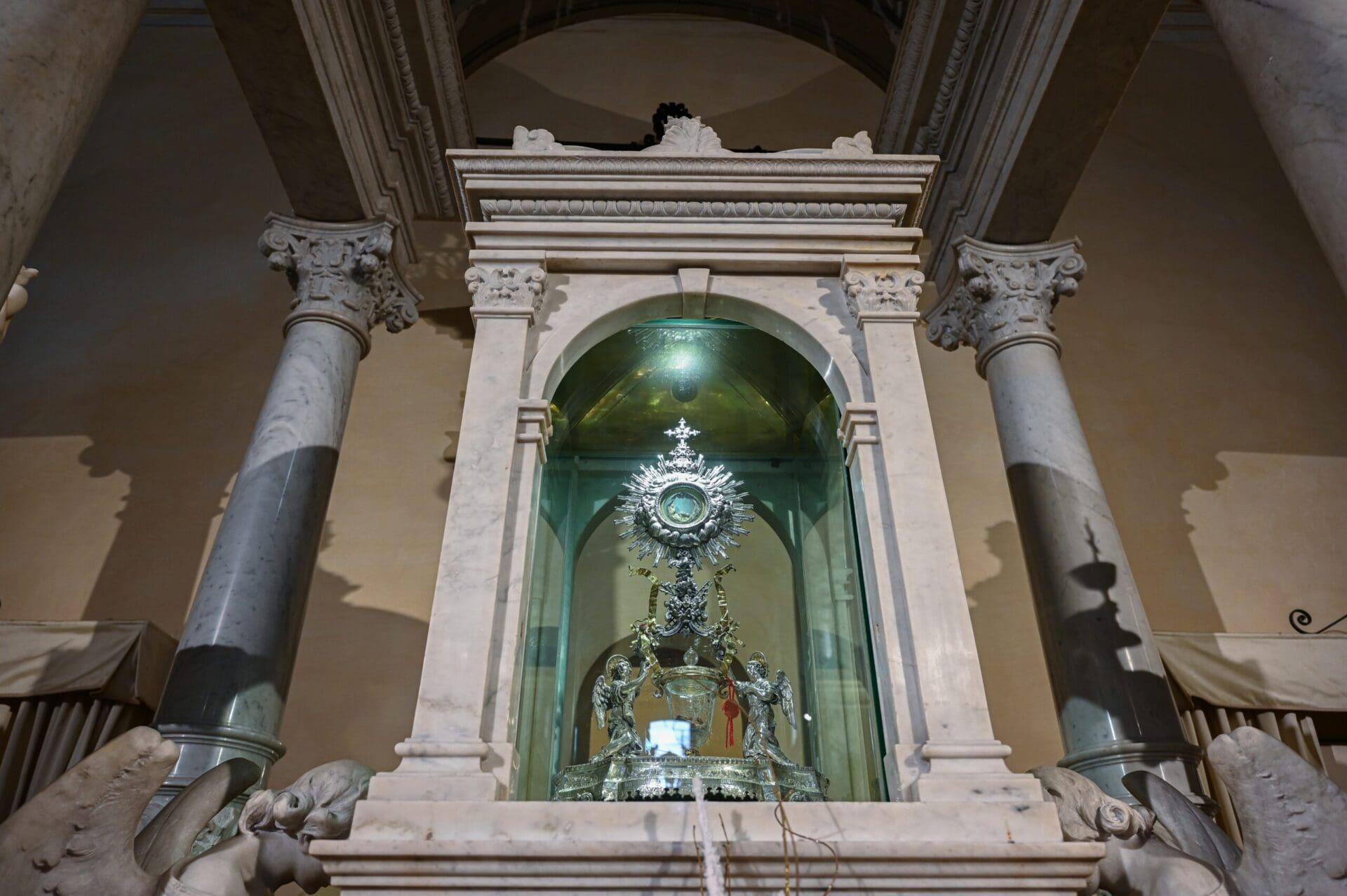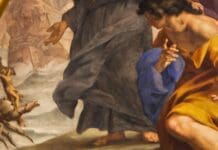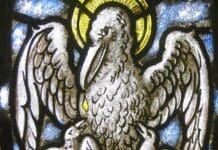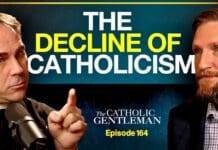In common speech, one may call the improbable or newly discovered a miracle, but as Catholics, we know a miracle to be an extraordinary divine act of God.
Here are three unbelievable, but true Eucharistic miracles of the Catholic Church.
The Eucharistic Miracle of Brussels
During the 14th century, in Brussels, Belgium, a thief broke into one of the city’s churches and stole about sixteen hosts from the tabernacle. The thief brought the hosts to a merchant who wished to cause grave harm to the Church.
On Good Friday, in 1370, the merchant and his group of friends drew their knives and began stabbing the hosts. Unexpectedly, the broken hosts started to bleed before their eyes causing the thieves to drop to their knees in horror. Blood flowed from the Hosts uncontrollably, and feeling great guilt, they gathered them up and returned them and confessed to a local priest before turning themselves in.
The hosts were enshrined in the Cathedral of St. Michael and remained there until World War II. Over the centuries the miracle has remained a vital part of local devotion. It was a reminder of the reality of Jesus’ presence in the Eucharist and connects the Blessed Sacrament to Good Friday, when a soldier pierced the side of Jesus, a torrent of blood and water poured out.
The Eucharistic Miracle of Buenos Aires
In 1996, a woman found a desecrated Host in a candle holder in her parish church in the commercial district of Buenos Aires. She turned the Host into her priest, who dissolved it in water and placed it within the Tabernacle per Canon Law.
A week later, when the same priest went to open the tabernacle, to his amazement he found the Host had turned into flesh and blood. Three years later, the Bishop of Buenos Aires sent the Host to the United States for testing. The results came back as human heart tissue with the blood type AB – the same as all other Eucharistic Miracles and of the blood found on the Shroud of Turin. At the time, the Bishop of Buenos Aires was Jorge Bergoglio – Pope Francis.
The Miracle of Lanciano
Around 700 A.D. in the city of Lanciano, Italy, a Basilian priest-monk was assigned to celebrate Mass at the monastery of Saint Longinus. Celebrating in the Latin Rite and using unleavened bread, the monk had doubts whether the Eucharist was truly the Body and Blood of Christ.
During the Mass, when he said the Words of Consecration with doubt in his heart and soul, the bread changed into living flesh and the wine change into blood which quickly coagulated into five globules of differing size.
In 1971 when the specimens were tested, they found the Flesh was human heart tissue. Both the Flesh and the Blood are blood type AB-, the same found on the Shroud of Turin and all other Eucharistic miracles.
Photo credit: SerFeo / Shutterstock.com


















Please pray for my son Kevin who is trying desperately to save his marriage.
Thank you, his father Charles.
Hello, Charles. What is Kevin’s wife’s name? I would like to pray for them, both.
I will pray for both o their marriage can be held together and PRAYER is the answer for all the problems of the world. Love and prayers
sorry wrong copie In common speech, one may call the improbable or newly discovered a miracle, but as Catholics, we know a miracle to be an extraordinary divine act of God.
Here are three unbelievable, but true Eucharistic miracles of the Catholic Church.
The Eucharistic Miracle of Brussels
During the 14th century, in Brussels, Belgium, a thief broke into one of the city’s churches and stole about sixteen hosts from the tabernacle. The thief brought the hosts to a merchant who wished to cause grave harm to the Church.
On Good Friday, in 1370, the merchant and his group of friends drew their knives and began stabbing the hosts. Unexpectedly, the broken hosts started to bleed before their eyes causing the thieves to drop to their knees in horror. Blood flowed from the Hosts uncontrollably, and feeling great guilt, they gathered them up and returned them and confessed to a local priest before turning themselves in.
The hosts were enshrined in the Cathedral of St. Michael and remained there until World War II. Over the centuries the miracle has remained a vital part of local devotion. It was a reminder of the reality of Jesus’ presence in the Eucharist and connects the Blessed Sacrament to Good Friday, when a soldier pierced the side of Jesus, a torrent of blood and water poured out.
The Eucharistic Miracle of Buenos Aires
In 1996, a woman found a desecrated Host in a candle holder in her parish church in the commercial district of Buenos Aires. She turned the Host into her priest, who dissolved it in water and placed it within the Tabernacle per Canon Law.
A week later, when the same priest went to open the tabernacle, to his amazement he found the Host had turned into flesh and blood. Three years later, the Bishop of Buenos Aires sent the Host to the United States for testing. The results came back as human heart tissue with the blood type AB – the same as all other Eucharistic Miracles and of the blood found on the Shroud of Turin. At the time, the Bishop of Buenos Aires was Jorge Bergoglio – Pope Francis.
The Miracle of Lanciano
Around 700 A.D. in the city of Lanciano, Italy, a Basilian priest-monk was assigned to celebrate Mass at the monastery of Saint Longinus. Celebrating in the Latin Rite and using unleavened bread, the monk had doubts whether the Eucharist was truly the Body and Blood of Christ.
During the Mass, when he said the Words of Consecration with doubt in his heart and soul, the bread changed into living flesh and the wine change into blood which quickly coagulated into five globules of differing size.
In 1971 when the specimens were tested, they found the Flesh was human heart tissue. Both the Flesh and the Blood are blood type AB-, the same found on the Shroud of Turin and all other Eucharistic miracles.
Dnevnik Svete Faustine Kowalske
1 tim ·
𝐷𝑉𝑂𝐽𝐸 𝐷𝑅𝐴𝐺𝐼𝐻 𝑃𝑅𝐼𝐽𝐴𝑇𝐸𝐿𝐽𝐴
“‘Što ti tu radiš tako rano?’Odgovorila sam: ‘Razmišljam o Tebi, Tvomu milosrdu i dobroti prema meni. A ti, Isuse, što ti tu radiš?’
‘Došao sam na susret s tobom da bih te
obasuo novim milostima.” (Dnevnik, 1705)
U svibnju 1935. godine, Faustina je nakon Svete Mise otišla u bolnički vrt. Tamo nije bilo pacijenata pa je mogla razmatrati o Božjim blagoslovima. Srce joj je toliko gorjelo ljubavlju prema Bogu da je pomislila da će puknuti. Mnogi sveci su imali ovo iskustvo. (Sveti Filip Neri je doživio ovu istu žarku ljubav od koje mu se srce povećalo). Onda je Isus stao pred Faustinu i počela se odvijati predivna razmjena dvaju zaljubljenih srdaca. Faustina je tako dugo živjela u bliskoj povezanosti s njim da se prema njemu odnosila kao prema najdražem prijatelju. Dvoje dragih prijatelja koji se međusobno obasipaju ljubavlju i milošću. Tome služe prijatelji.
Gospodine moj, želim takvo prijateljstvo s tobom.
𝑰𝒔𝒖𝒔𝒆, 𝒔𝒎𝒊𝒍𝒖𝒋 𝒔𝒆 𝒏𝒂𝒎𝒂 𝒊 𝒄𝒊𝒋𝒆𝒍𝒐𝒎𝒆 𝒔𝒗𝒊𝒋𝒆𝒕𝒖.
And the Lord replied, “Who, then, is the faithful and prudent steward whom the master will put in charge of his servants to distribute the food allowance at the proper time? Blessed is that servant whom his master on arrival finds doing so. Truly, I say to you, he will put him in charge of all his property.
But if that servant says to himself, ‘My master is delayed in coming,’ and begins to beat the menservants and the maidservants, to eat and drink and get drunk, then that servant’s master will come on an unexpected day and at an unknown hour and will punish him severely and assign him a place with the unfaithful.
That servant who knew his master’s will but did not make preparations nor act in accord with his will shall be beaten severely; and the servant who was ignorant of his master’s will but acted in a way deserving of a severe beating shall be beaten only lightly. Much will be required of the person entrusted with much, and still more will be demanded of the person entrusted with more.”